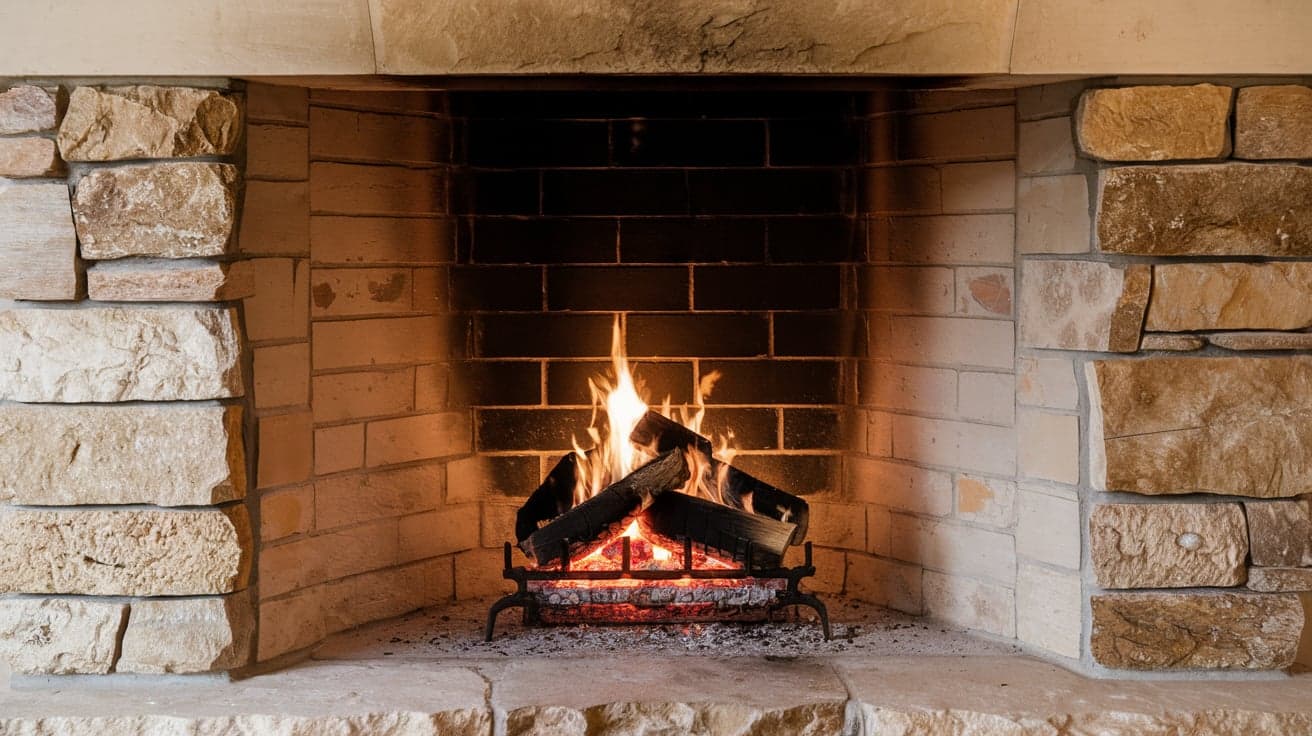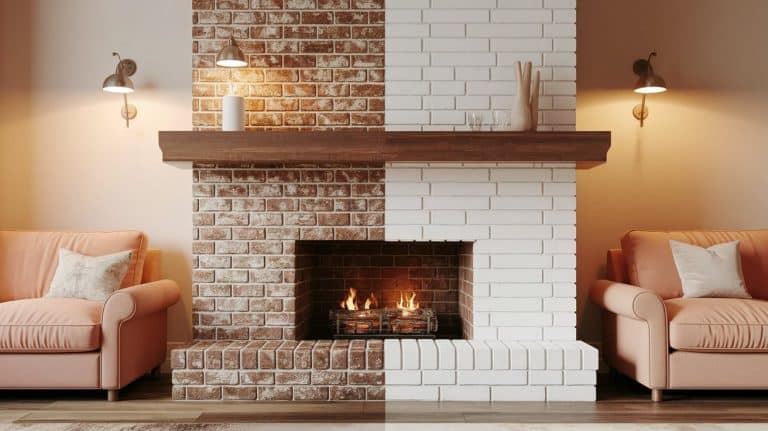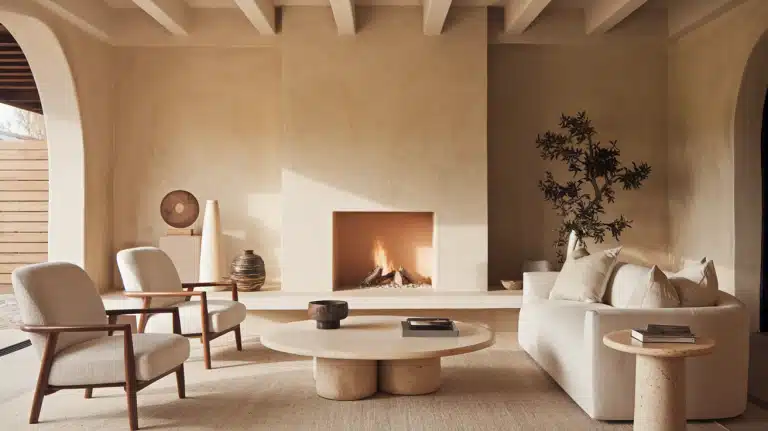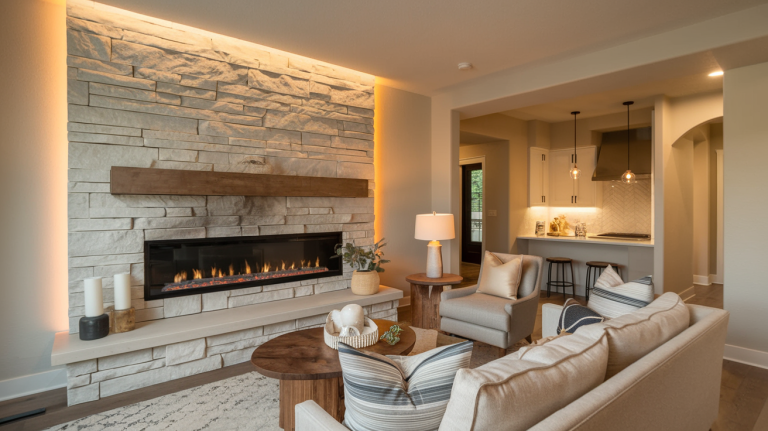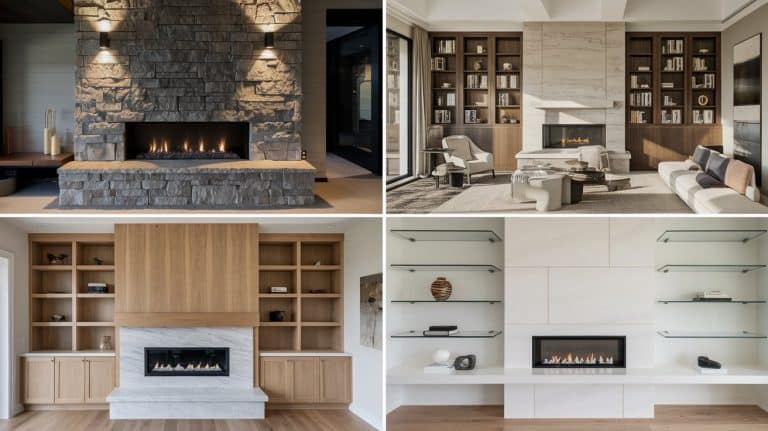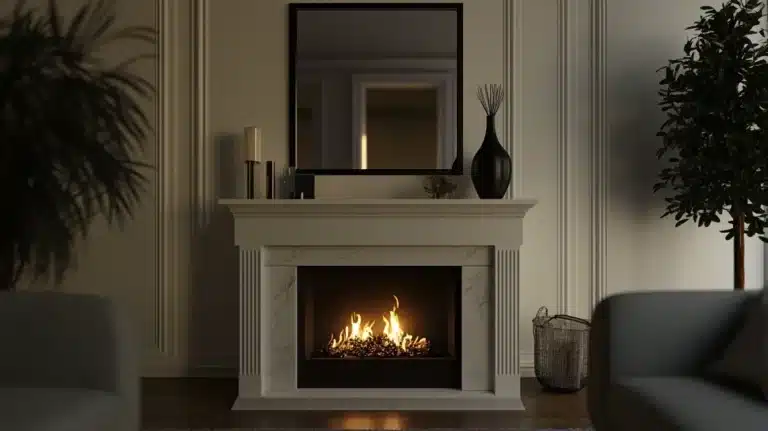17 Popular Stone Types for Rustic Fireplaces
A stone fireplace redesigns an ordinary room into a rustic retreat where memories are made and stories are shared.
I’ve found that homeowners consistently gravitate toward stone for their rustic fireplaces, and for good reason. The natural textures and earthy colors bring warmth and character that manufactured materials can’t match.
Choosing the right stone can be challenging, especially with so many options available. Each type creates a distinct look that can complement your existing decor or become the centerpiece of your redesign.
I’ll discuss popular stone types for rustic fireplaces, helping you find the perfect match for your mountain lodge, country cottage, or rustic-inspired modern home.
17 Classic Stone Selections for a Rustic Chic Look
Nature’s most beautiful stone elements bring timeless character and organic appeal to rustic design spaces.
1. Limestone: Nature’s Timeless Canvas
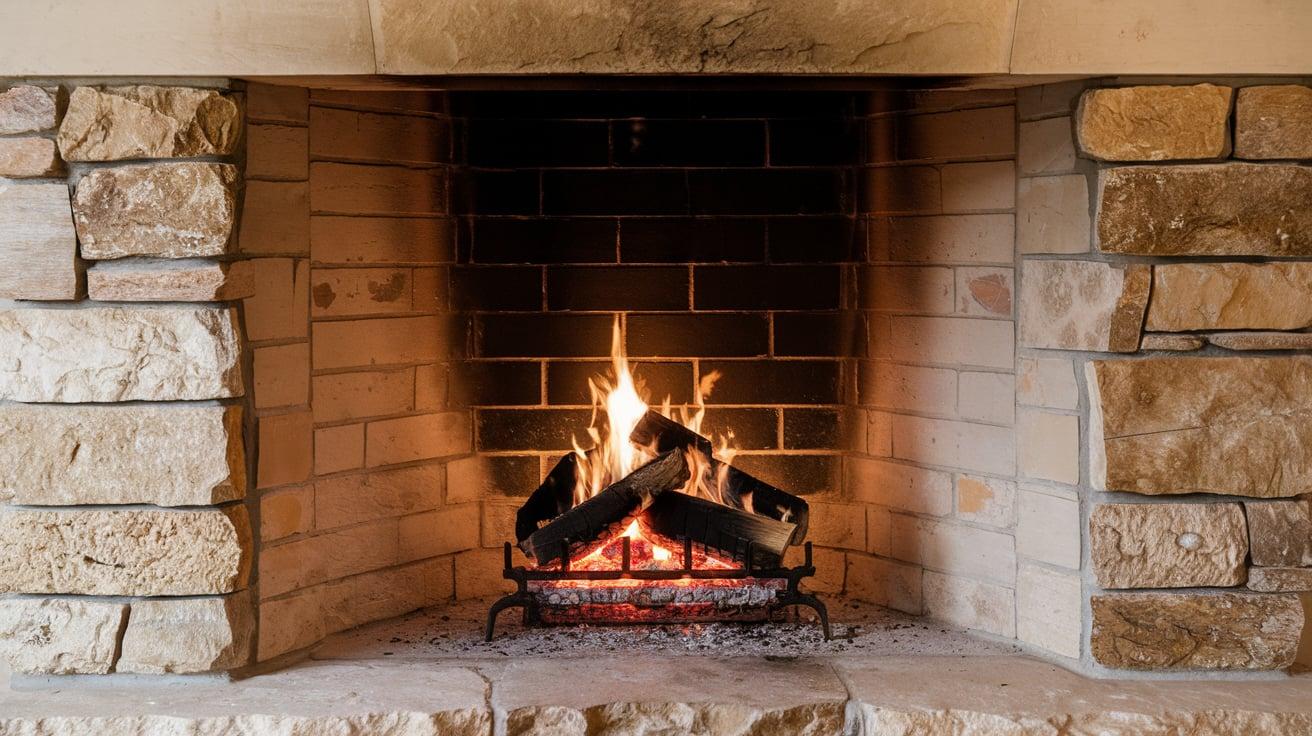
Limestone stands as nature’s most versatile artistic medium, offering a palette of soft, honeyed tones that seamlessly complement wooden beams and aged brick.
This calcium-rich sedimentary rock contains millions of years of Earth’s history, visible in its subtle fossil patterns and organic textures.
Craftsmen prize limestone for its workability, which allows it to be easily carved into archways, fireplace surrounds, or intricate detailing that captures light and shadow throughout the day.
2. River Rock Streams of Tranquility
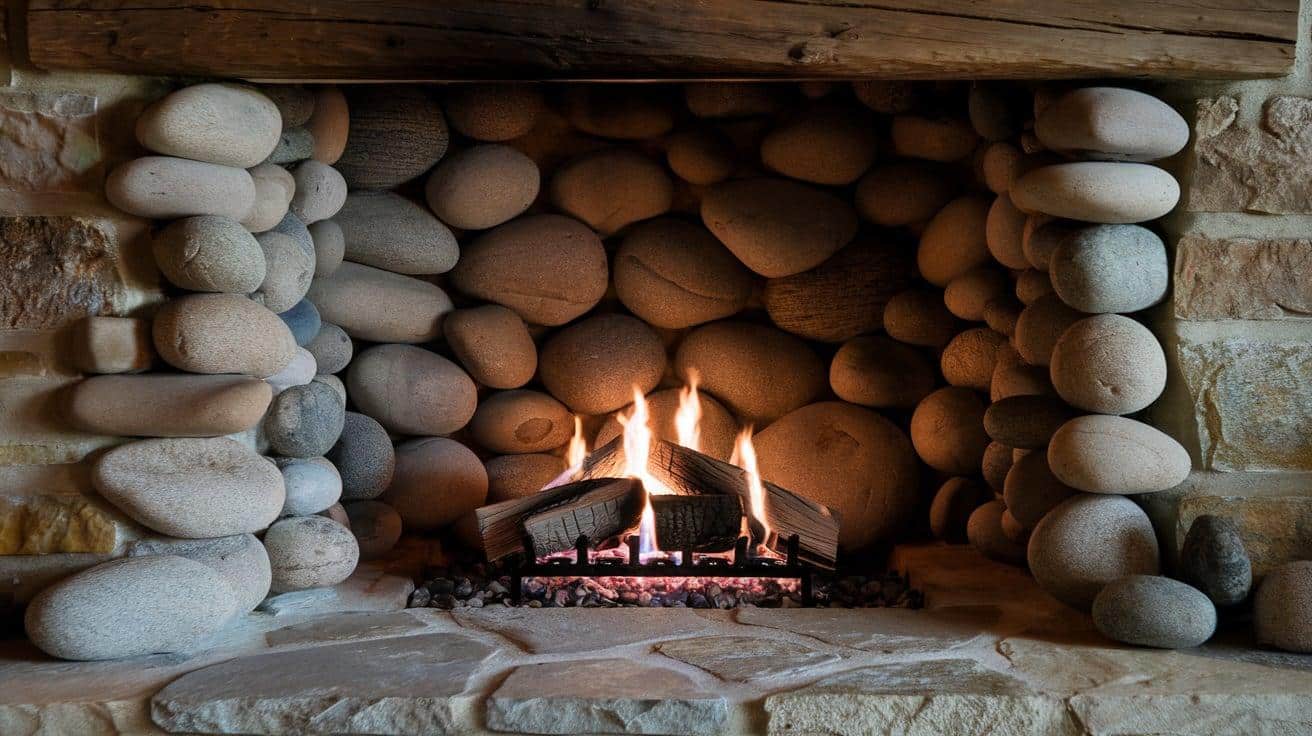
River rocks bring the meditative quality of flowing water into your space through their naturally tumbled, smooth contours, each stone polished by decades of gentle current.
These varied stones create a visual rhythm with their diverse shapes and subtle color variations spanning earthy grays, blues, and warm ambers.
River rock installations evoke childhood memories of stream-hopping and peaceful shorelines, connecting interior spaces to the natural world.
3. Dramatic Elegance
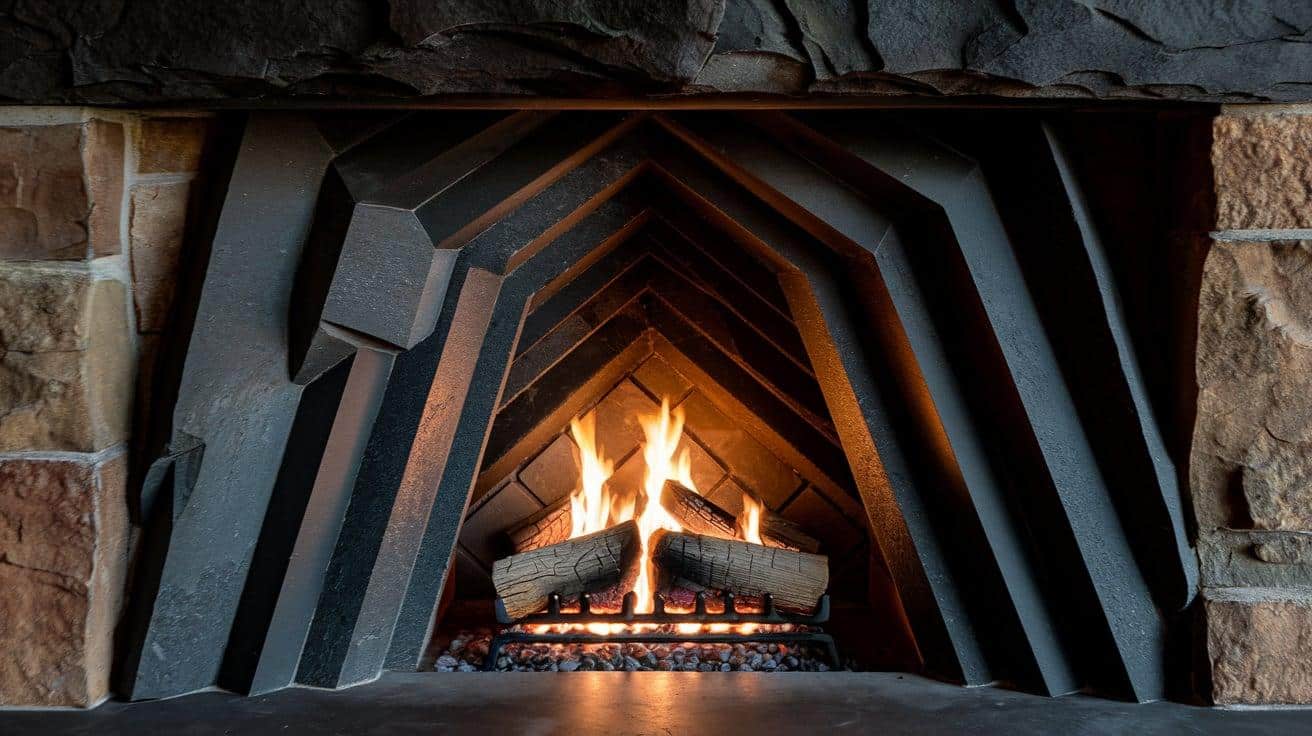
Slate emerges from the earth’s depths as a testament to natural compression and time, a metamorphic masterpiece of layered minerals that split into thin, strong sheets with unmistakable character.
Its color palette ranges from mysterious charcoals and midnight blues to rich purples and forest greens, often with mesmerizing color shifts that change with viewing angle and lighting.
Slate brings sophisticated drama to rustic spaces while maintaining an essential connection to the natural world.
4. Flagstone Nature’s Geometric Puzzle
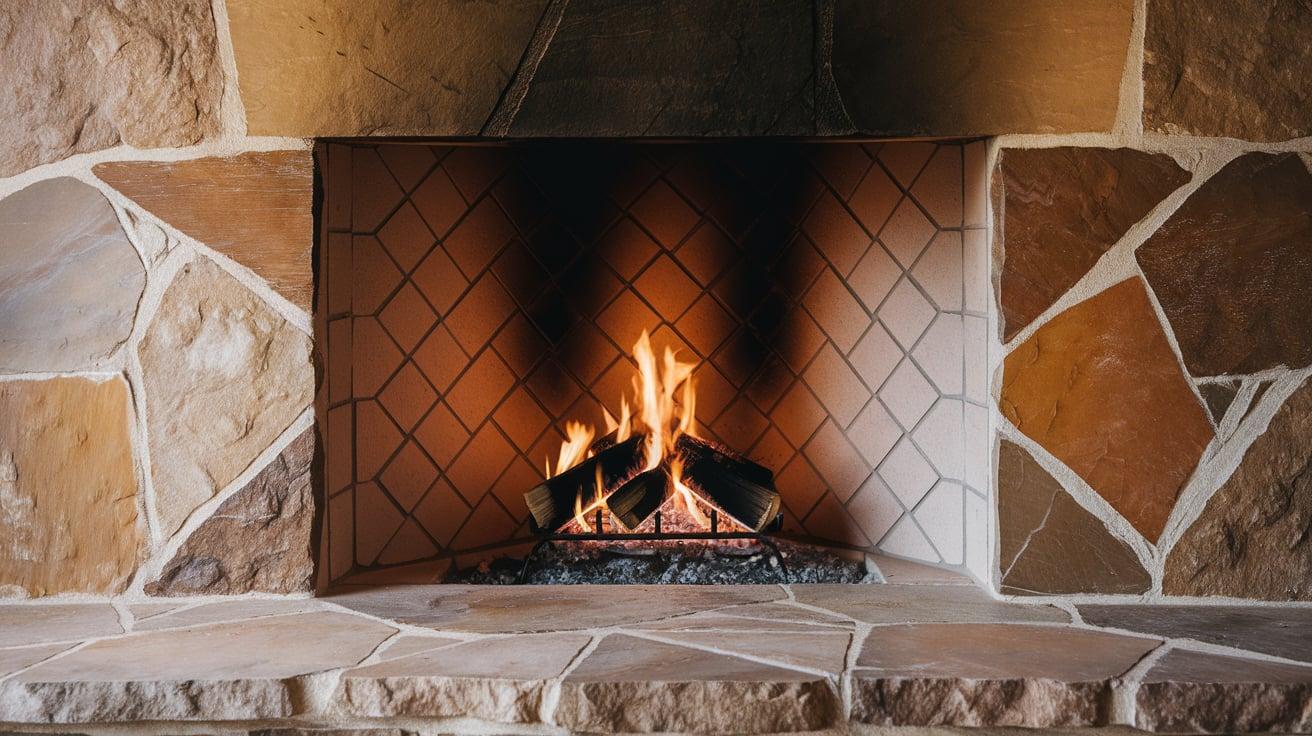
Flagstone presents itself as Earth’s natural tilework, flat, irregularly shaped pieces that interlock in endless creative arrangements while maintaining a distinctly organic aesthetic.
These sedimentary rock pieces showcase fascinating striations of color that tell geological stories spanning millions of years. The flagstones’ naturally non-slip surface makes them ideal for both indoor and outdoor applications, creating seamless transitions between living spaces.
The stone’s substantial thickness provides a reassuring solidity underfoot, while its varied earth tones, from warm sandstones to cool bluish grays, allow designers to create subtle color flows throughout a space.
5. Fieldstone Nature’s Natural Treasure
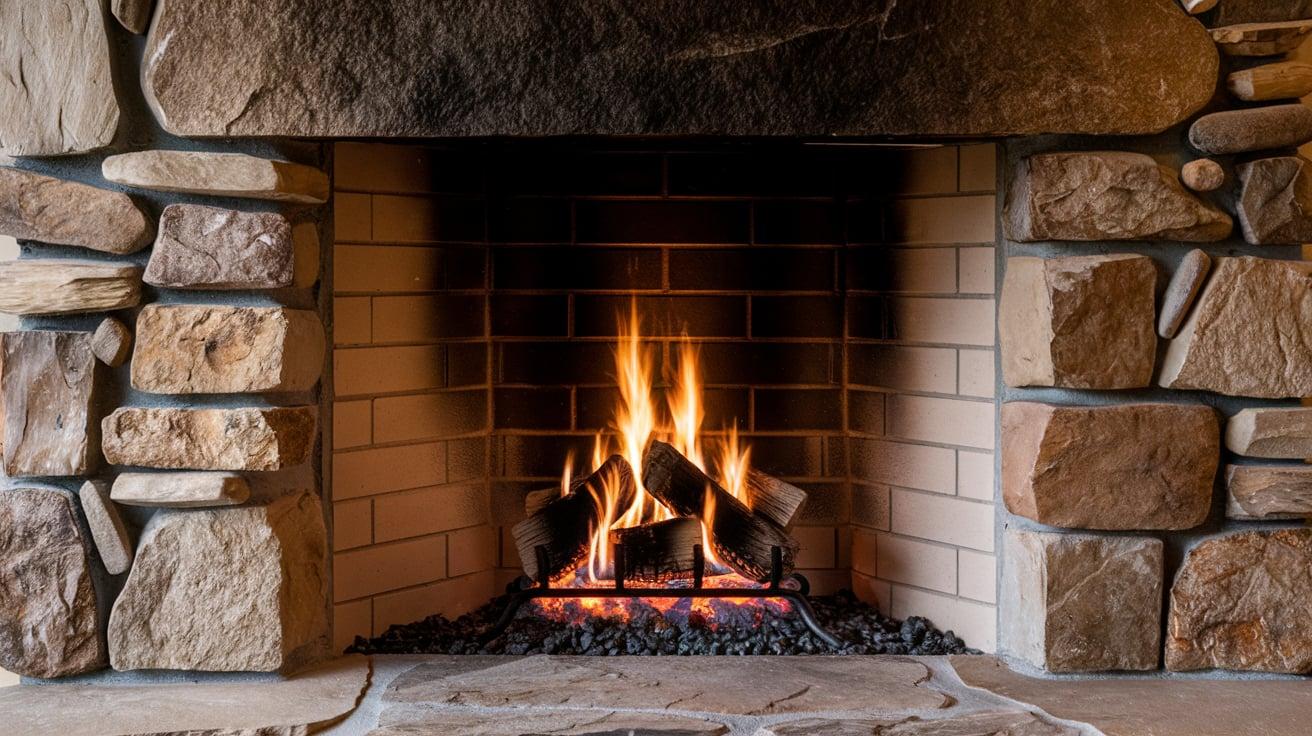
Fieldstone is nature’s original building block, gathered directly from the earth’s surface where farmers have cleared their fields for centuries.
These unrefined stones showcase a mesmerizing diversity of colors, textures, and mineral compositions that cannot be manufactured.
When assembled into walls or fireplaces, fieldstone creates a sense of primitive stability and connection to agricultural heritage.
6. Chiseled Granite
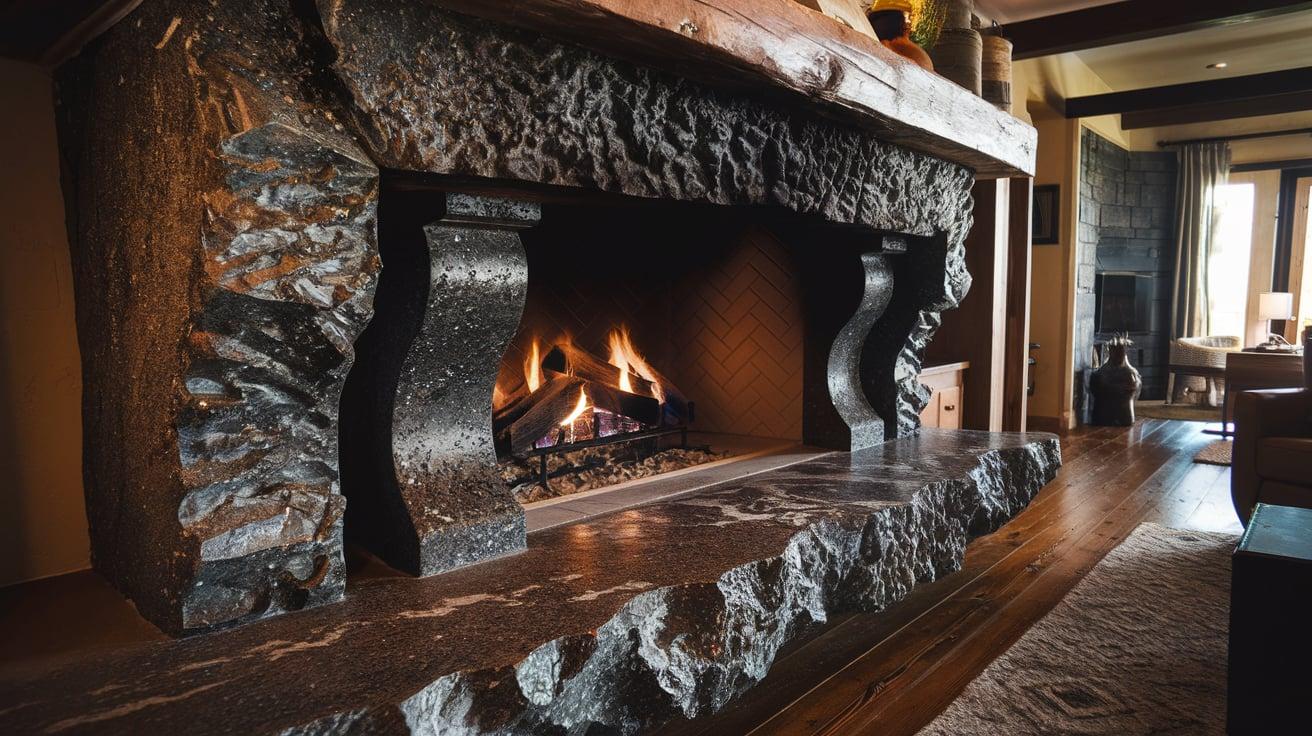
Chiseled granite commands attention with its formidable presence and rugged dignity a testament to nature’s raw power.
This igneous rock, formed through intense heat and pressure, delivers unmatched durability while showcasing spectacular mineral patterns of quartz, feldspar, and mica that catch light in captivating ways.
Each chisel mark on its surface tells the story of the artisan’s hand, creating a textural landscape of shadow and highlight that changes throughout the day.
7. Cobblestone Historic Charm
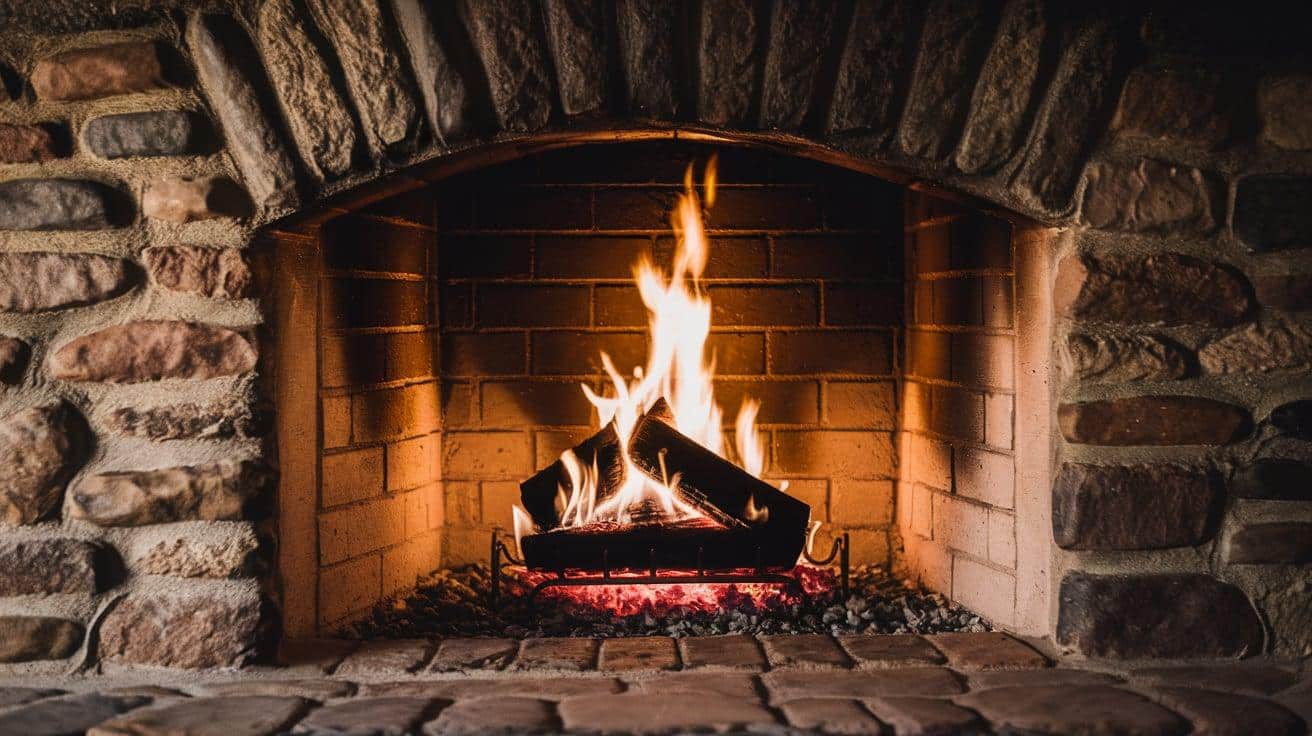
Cobblestone carries with it the romantic echoes of old-world European streets and countryside paths, each stone rounded and polished through centuries of use.
When placed together, these compact, egg-shaped stones create intricate patterns, forming a unified surface that is greater than the sum of its parts.
The varied tones from soft grays to rich browns and occasional blues create a natural mosaic effect that adds visual interest while maintaining rustic authenticity.
8. Sandstone Earth’s Warm Canvas
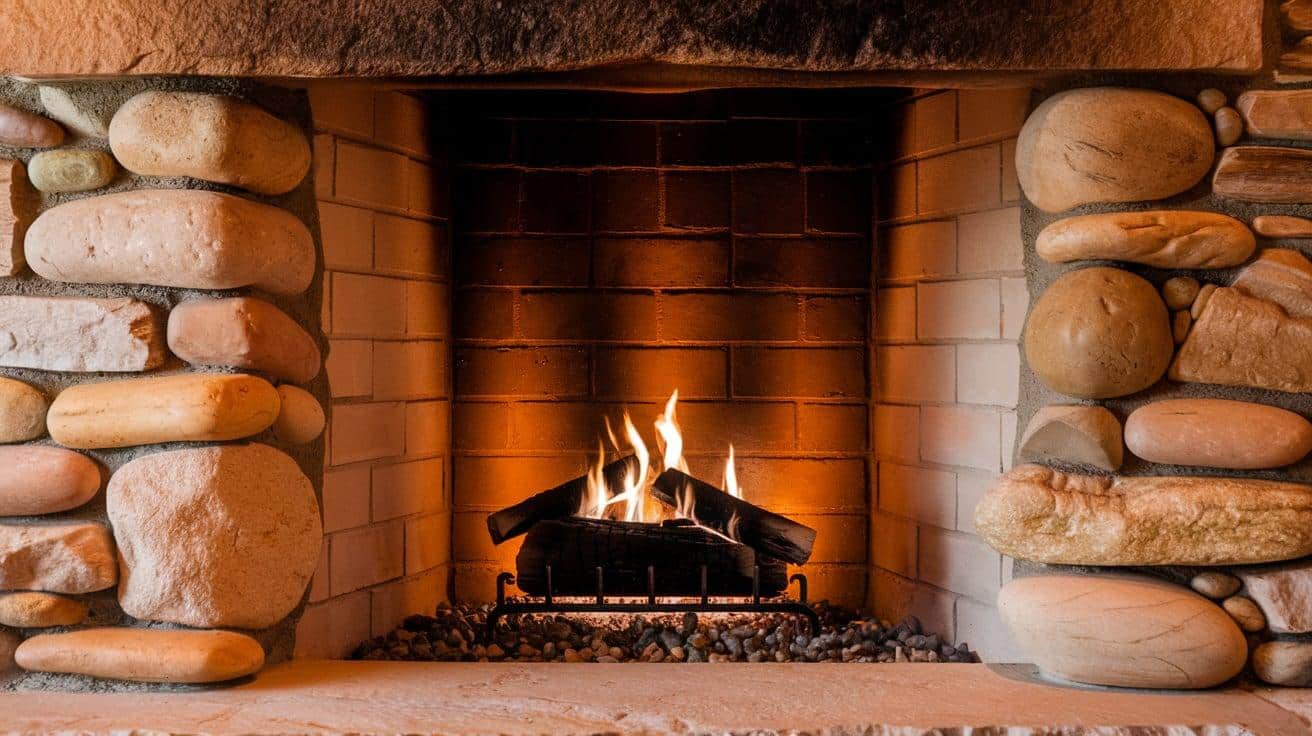
Sandstone embraces interiors with its warm, golden-amber palette that captures and reflects natural light like no other stone.
Formed from ancient dunes compressed over millions of years, it retains subtle linear patterns that whisper stories of prehistoric winds and shifting landscapes.
Its naturally soft texture can be finished in various ways, from rough-hewn to smoothly honed, allowing designers to create precisely the right tactile experience.
9. Travertine Nature’s Sculptural Marvel
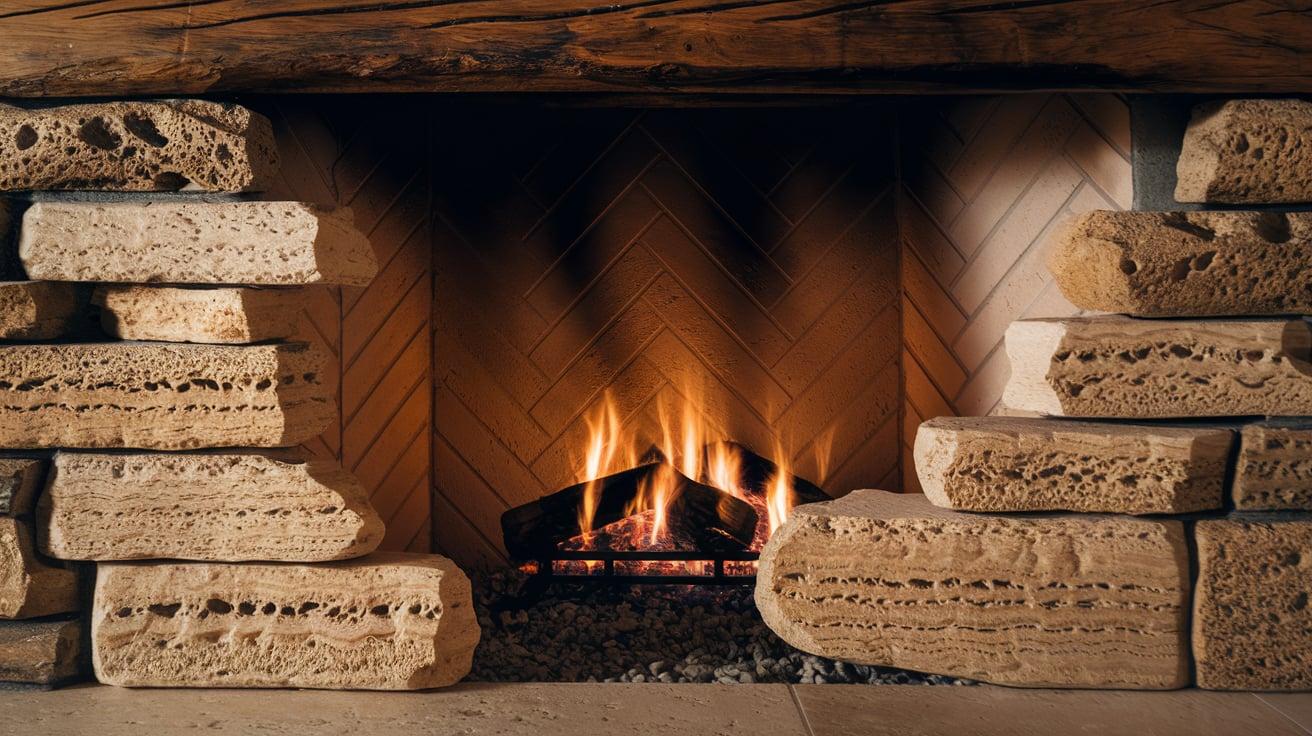
Travertine unveils itself as nature’s most intriguing geological artwork a limestone formed by mineral springs with fascinating honeycombed structures and delicate banding that resembles flowing water frozen in time.
Its warm palette ranges from creamy whites to rich honeys and subtle tans, creating an inviting atmosphere in any space.
The stone’s natural cavities can be filled or left open, offering designers the choice between smooth sophistication or textural interest.
10. Moss Rock Living Stone Canvas
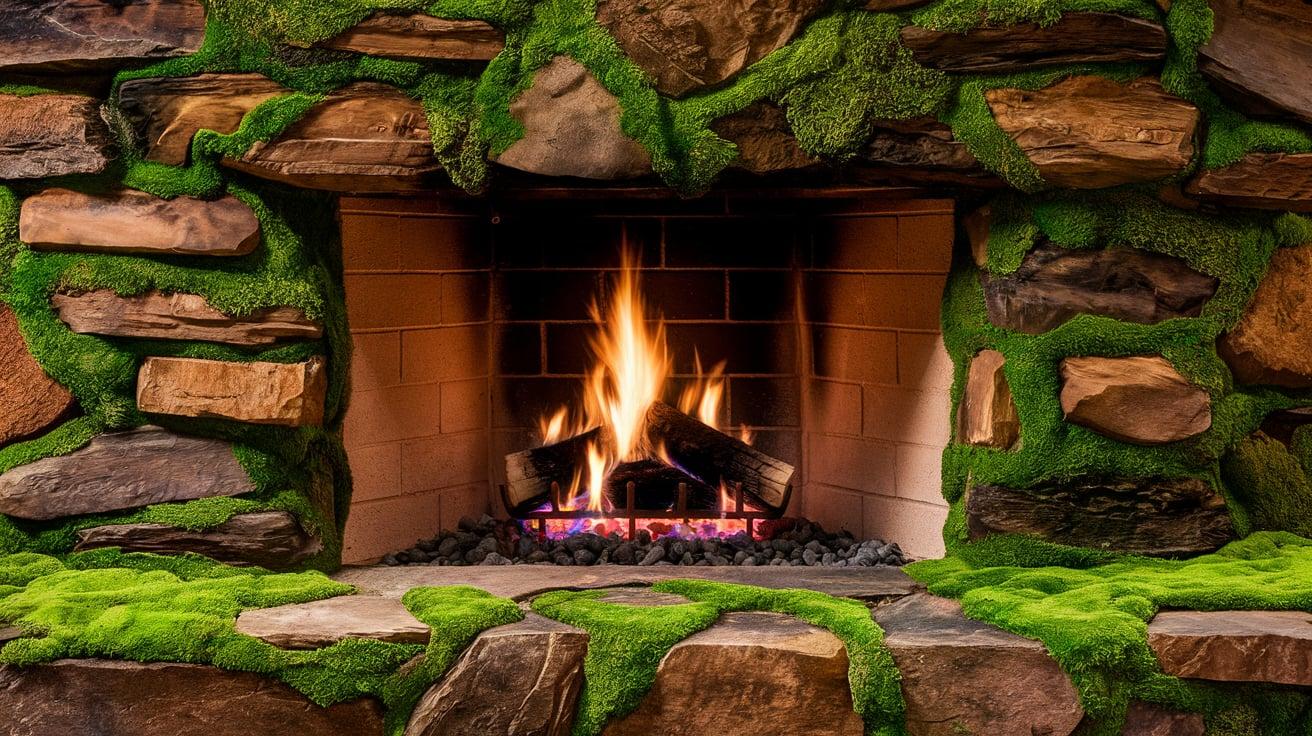
Moss rock transforms ordinary stone into living art, with weathered boulders adorned with velvety moss in vibrant greens that soften the hard edges of rustic design.
These ancient stones tell ecological stories, with each patch of moss and lichen representing decades or even centuries of slow, persistent growth in forest environments.
When brought indoors, Moss Rock creates an immediate connection to woodland settings, evoking the peaceful ambiance of forest floors and shaded creeks.
11. Basalt Volcanic Drama
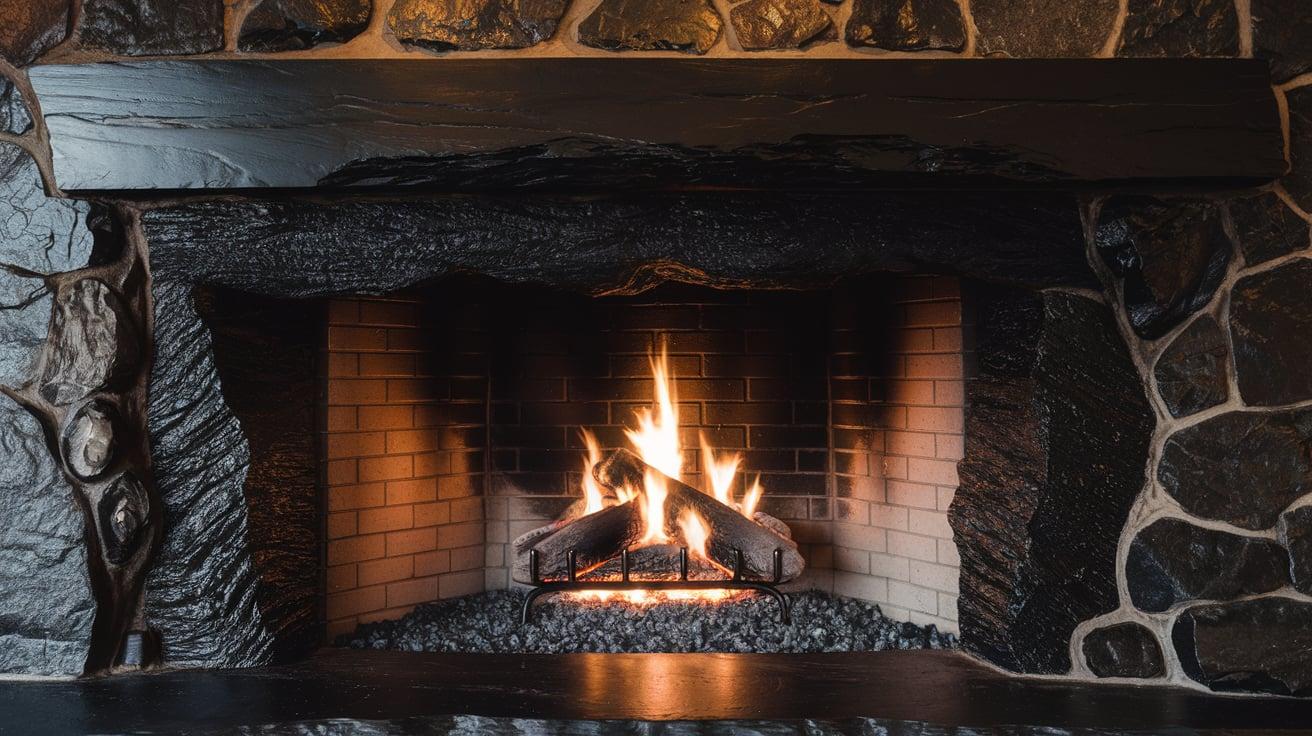
Basalt emerges from volcanic forces as a stone of striking character: dense, dark, and commanding with a presence that grounds any space it occupies.
This igneous rock’s deep charcoal tones create dramatic focal points that anchor rustic interiors with their primitive strength.
Basalt’s fine-grained texture offers a more refined look than many rustic stones while maintaining an undeniable connection to the earth’s most powerful forces Oft and strong, a design dialogue that adds sophistication to rustic environments.
12. Marble Ascended Rusticity
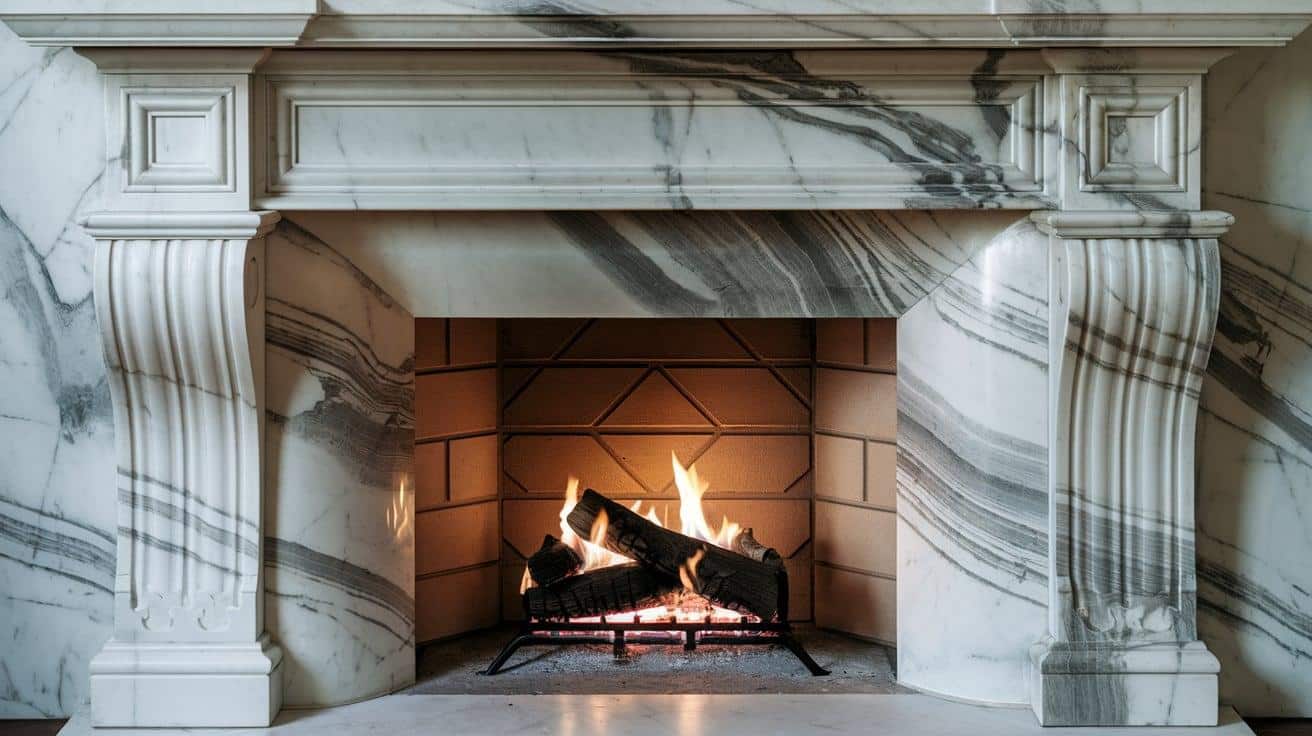
Marble brings its legendary luminosity to rustic design, creating unexpected harmony between refined elegance and earthy authenticity.
This metamorphic wonder was transformed from limestone through intense heat and pressure and features distinctive veining that tells geological stories across its polished surface.
In rustic settings, marble works best when honed or leathered rather than highly polished, allowing its natural character to complement rather than compete with more textural elements. Points that draw the eye and invite appreciation for nature’s artistic capabilities.
13. Bluestone Subtle Sophistication
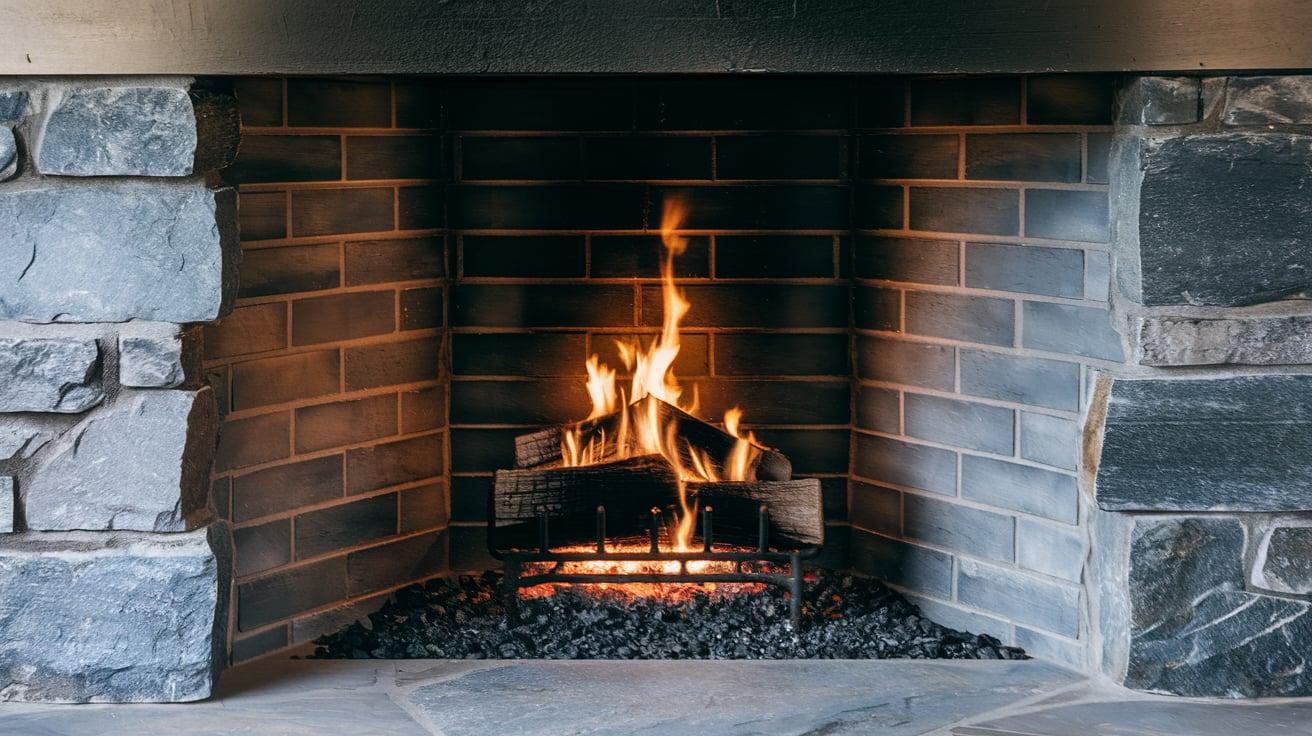
Bluestone delivers understated elegance with its distinctive blue-gray colorations a palette that shifts subtly from steely blue to misty gray depending on light conditions.
This dense sedimentary rock features a naturally flat cleft that makes it particularly well-suited for precise installations while maintaining rustic character.
Bluestone’s consistent coloration serves as a calming counterpoint to the visual complexity of wood grain and other rustic elements, creating a balanced design that feels intentional rather than haphazard.
14. Quartzite Nature’s Glass
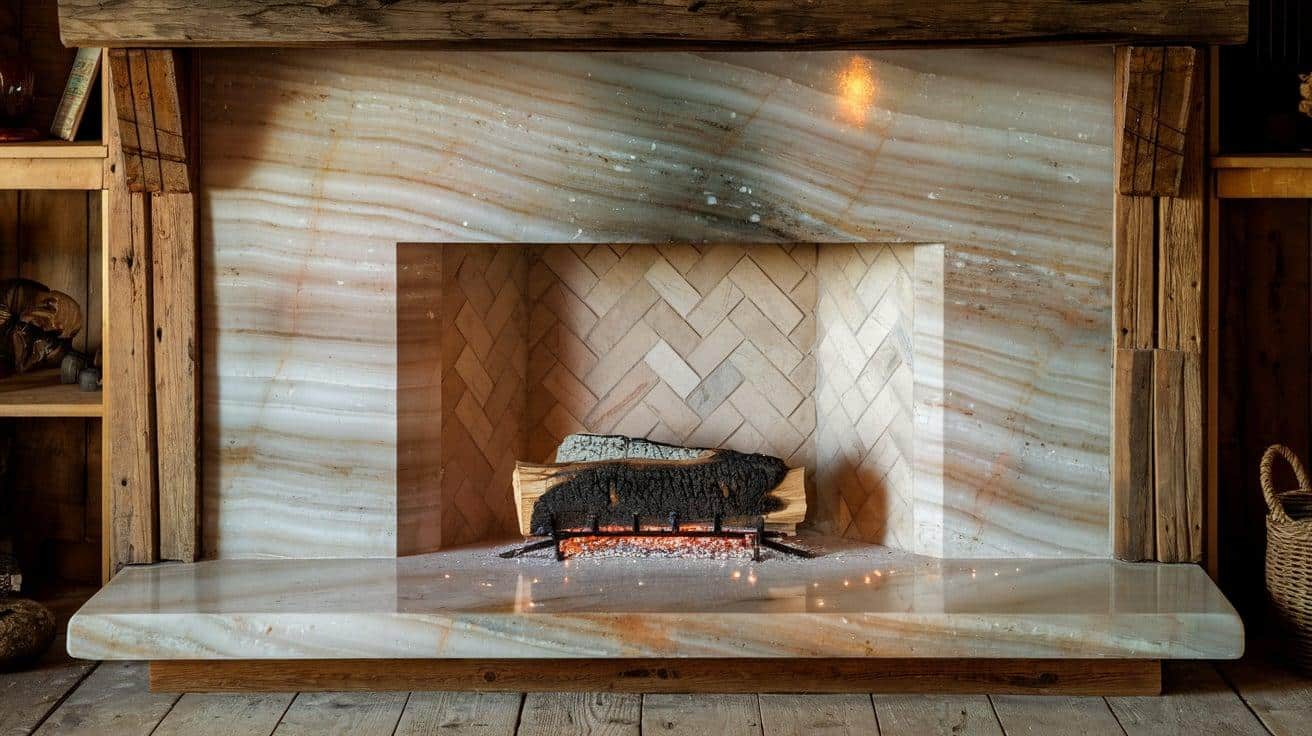
Quartzite presents itself as nature’s most resilient artwork, a metamorphic marvel transformed from sandstone through intense heat and pressure that results in a glass-like durability.
Its crystalline structure creates spectacular light play across surfaces, with mineral-rich veining that ranges from subtle to dramatic.
Quartzite’s exceptional hardness makes it impervious to scratching and etching, ensuring that its beauty remains unchanged for generations.
15. Soapstone Tactile Temptation
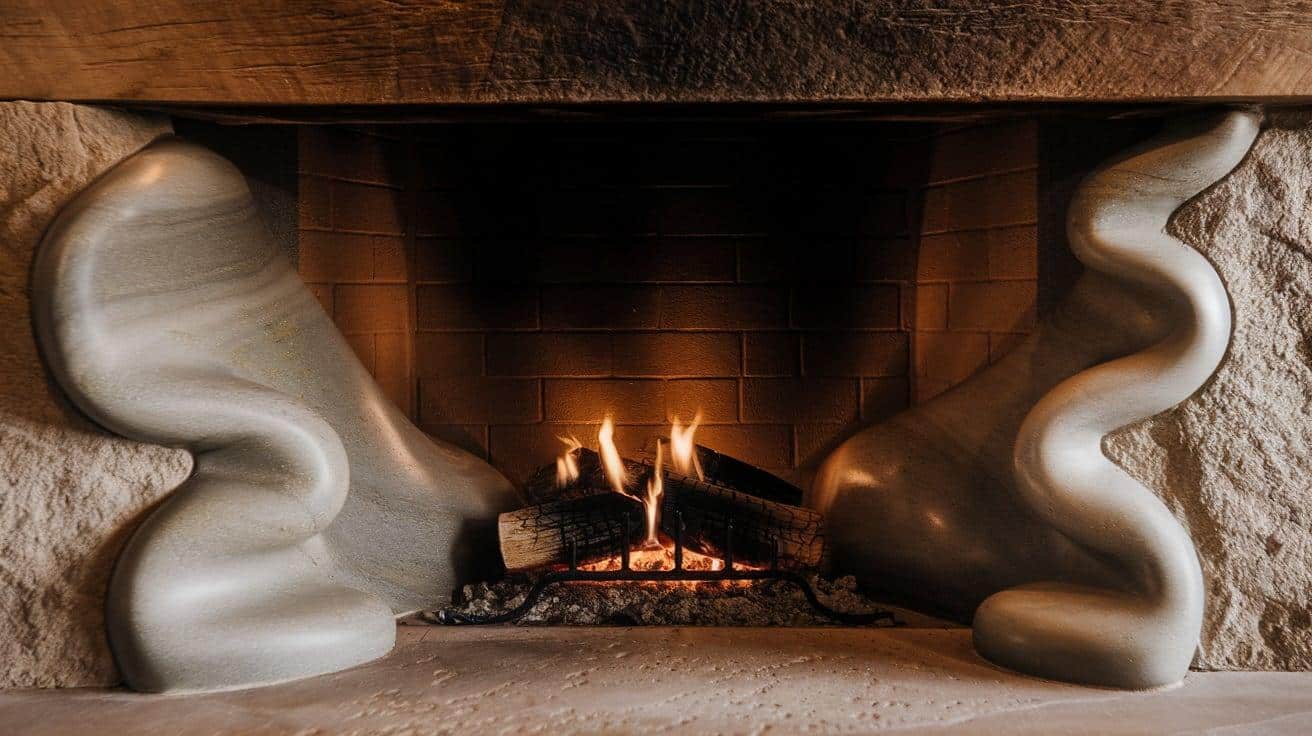
Soapstone invites touch with its uniquely smooth, almost silky texture that creates an immediate sensory connection unlike any other stone.
This metamorphic rock, composed primarily of talc, offers a deep charcoal palette that naturally darkens and develops character over time, telling the story of its use through gentle patination.
Soapstone’s remarkable heat retention makes it ideal for fireplaces, where it continues to radiate warmth long after the flames have died down.
16. Riverbed Rock Nature’s Mosaic
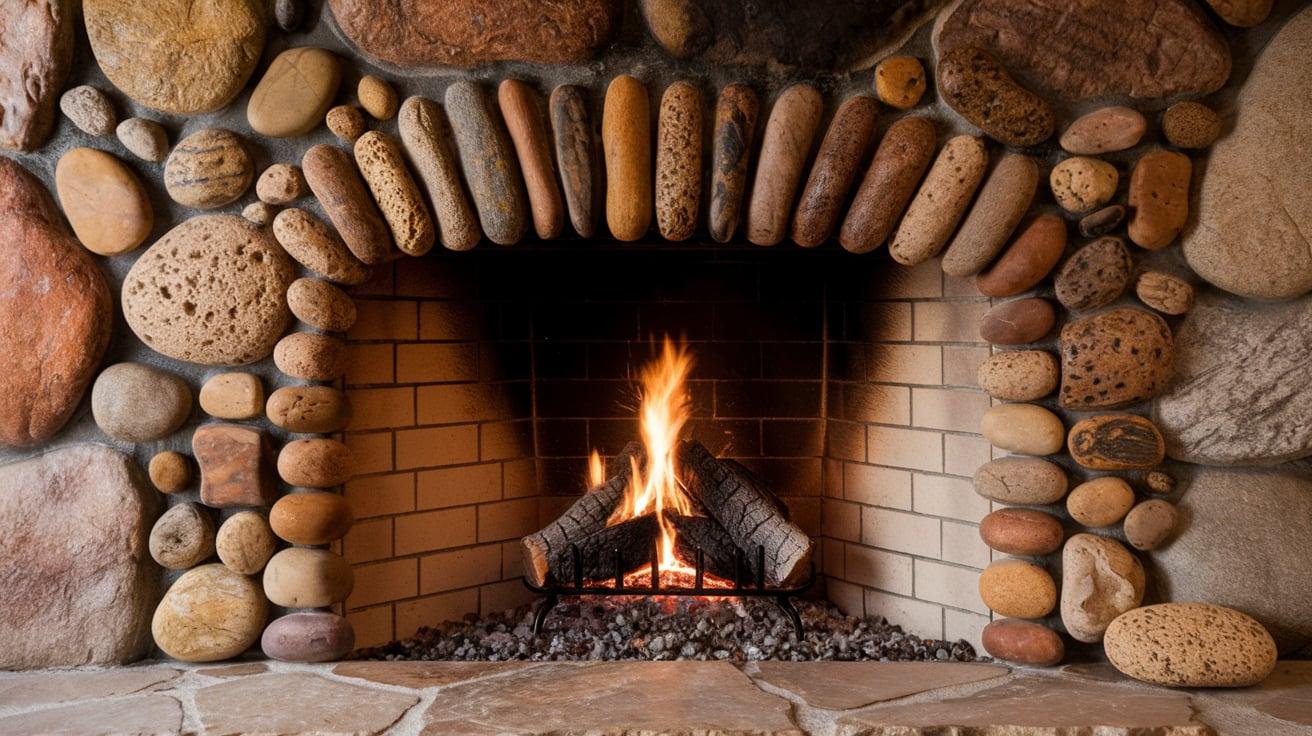
Riverbed rock brings the mesmerizing diversity of water-worn stones into architectural settings. Each piece is selected from ancient waterways where centuries of flowing water have polished and shaped them to perfection.
The fascinating variety of colors, patterns, and mineral compositions creates visual rhythms that mimic the random perfection found in nature.
When arranged thoughtfully, these stones create a sense of movement reminiscent of flowing water, adding kinetic energy to static structures.
17. Cobble Mix Geological Storytelling
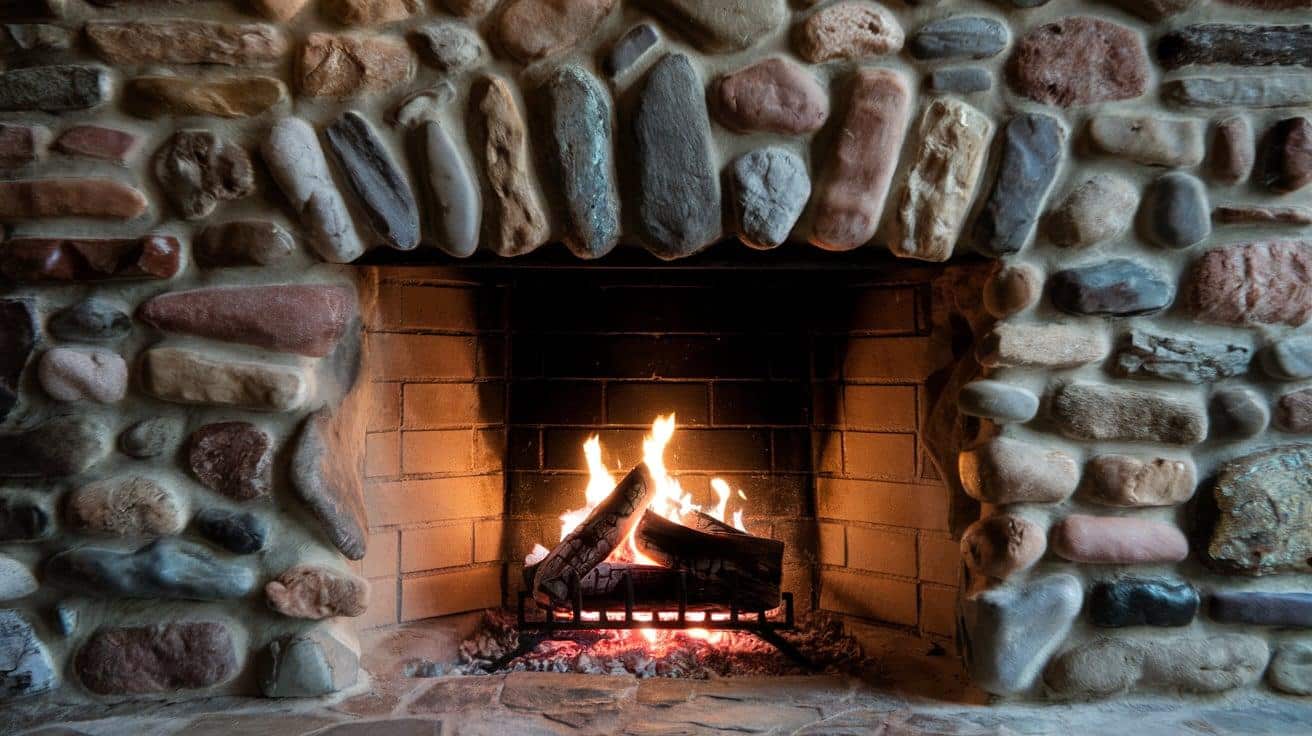
Cobble mix celebrates stone diversity through thoughtfully combined varieties that create rich visual narratives across surfaces.
This curated approach allows designers to incorporate stones with complementary or contrasting colors, textures, and origins, creating installations that feel both intentional and naturally evolved.
The resulting compositions tell geological stories that span different formations, regions, and periods, unified through thoughtful arrangement and craftsmanship.
Wrapping It Up
The perfect stone for your rustic fireplace isn’t just a design choice; it’s an investment in creating a space where your family will gather for generations.
Whether you’re drawn to the ancient fossils embedded in limestone, the woodland magic of moss rock, or the volcanic drama of basalt, each stone type brings its own geological story into your home.
Your fireplace will become the heart of your living space, a testament to nature’s artistry and your style. As you consider these options, envision how each stone might complement your existing décor while creating the ambiance you desire.
Ready to change your ordinary room into a rustic retreat? Visit a local stone mason to see samples of these materials in person.
Frequently Asked Questions
1. Are Stone Fireplaces Coming Back?
Yes, stone fireplaces are making a strong comeback as homeowners increasingly value natural materials, rustic charm, and timeless design elements that create warmth.
2. What to Do with the 1970s Stone Fireplace?
Modernize your 1970s stone fireplace by whitewashing the stones, adding a sleek mantel, updating the hearth, or installing a new insert.
3. What Kind of Stone Is Best for Fireplaces?
Limestone, granite, and soapstone are top choices for fireplaces. Limestone offers classic elegance; granite provides durability and heat resistance.

